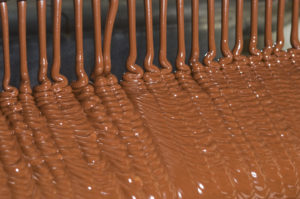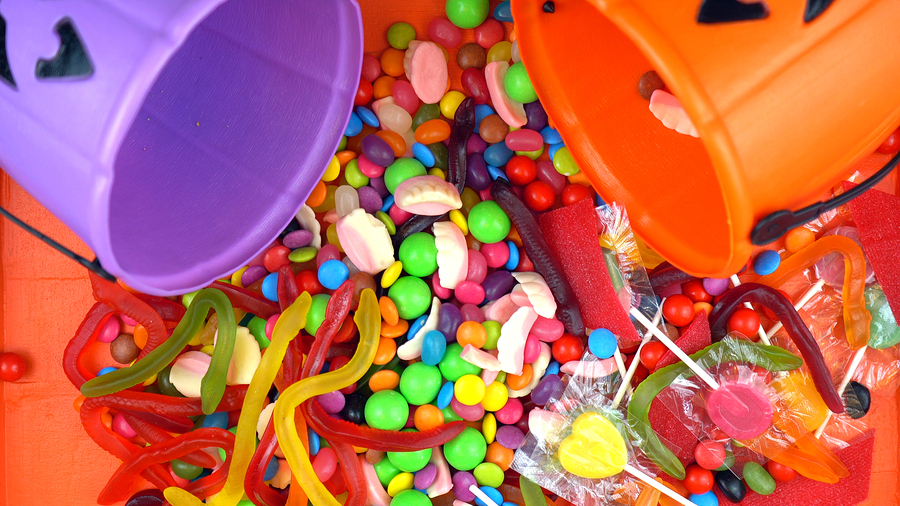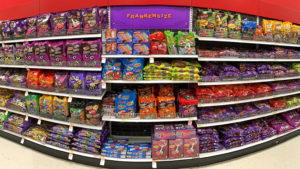For children in the U.S., trick-or-treating for candy is the essence of celebrating Halloween. But surprisingly, carting home bags full of sweet delights is a relatively recent tradition. It wasn’t until the 1930s trick-or-treating became a commonplace practice in America when homemakers handed out homemade treats such as cookies, cake, and fruit to children. In the 1970s, factory-made candy became the standard treat to hand out to trick-or-treaters as parents began to feel sealed candy was safest. And candy manufacturers quickly got in on the act.
Fast forward to 2017, a year in which the National Confectioners Association (NCA) predicts consumers will spend over $2.7 billion on Halloween candy alone. In fact, the California Milk Processors Board estimates that “an average Jack-O-Lantern bucket typically carries about 250 pieces of candy worth 9,000 calories, and about three pounds of sugar”! All this sweet-generating revenue, according to the NCA, helps support 55,000 candy maker employees and “more than 400,000 additional Americans whose jobs rely in part on the sale of confections.” Without a doubt, candy is big business — and Halloween is its biggest cash cow. But how do manufacturers keep up with all that demand?
Your bag full of Halloween candy was years in the making
Getting ready for Halloween is no easy feat. For example, the Hershey Company, Halloween’s candy manufacturing leader, employs a special task force whose sole mission is to produce Halloween candy. This “dream team” of developers, sales specialists, designers, marketers, and more begin preparing for Halloween at least two years in advance! Why do they have to start so early?
Retail giants like Walmart and Kroger are the major drivers behind the packaging designs and new candy concepts that line their shelves each year. And it’s the dream team’s job to make these requests a reality. Hershey food scientists spend a year creating new products based on retailers’ requests. The team members present their ideas to candy sellers at least one year before launching the products so they can spend the next year on production. But how are candy manufacturers able to produce Halloween candy on such a large scale every year?
Candy makers still use these tried-and-true inventions today
There are more than 1,000 candy manufacturing facilities spread across all 50 U.S. states, according to the NCA, each equipped with a host of inventions that allow them to crank out enormous quantities of candy. And one Industrial-era invention some still use today is the revolving steam pan for boiling sugar. The pan uses a combination of steam power and heat to regulate the temperature and continuously stir the confections. This machine processes large quantities at one time, and keeps the candy from burning. The Industrial Revolution also brought about the invention of the candy press. With this machine, manufacturers could begin making many shapes and sizes of candy simultaneously, a trend that has carried into modern-day sweets manufacturing.
What kinds of candy will fill our Halloween bags in the future?

Advances in automation and food science are allowing candy manufacturers to produce unique Halloween offerings in greater quantities than ever before. In fact, some of the world’s major candy manufacturers have developed ways to produce melt-proof chocolate that can remain solid at temperatures higher than 100 degrees Fahrenheit!
So, when you see an exciting new flavor of your favorite candy on store shelves or in children’s bags this year, remember that it was two years in the making. And as kids and adults alike devour their favorite Halloween treats, candy manufacturers are already busy prepping for next year — and the year after!

